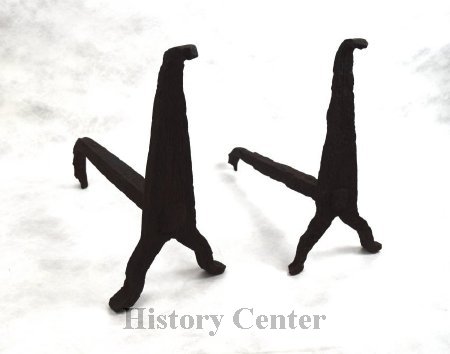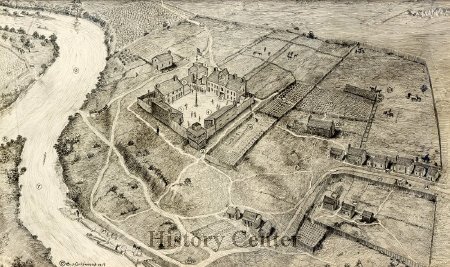Date:
Early 1800s
Title:
Old Fort Andirons
Description:
Old Fort Wayne
Because waterways were highways in the wilderness, the confluence of the St. Mary's, St. Joseph, and Maumee Rivers was desirable to the Miami Indians and early settlers who sought to claim the land. Three American forts were built in the area, which the Miami called Kekionga, beginning with General Anthony Wayne who built the first American fort here in September and October 1794. The last of these forts was built in 1815-1816 by Major John Whistler. The fort was constructed entirely of wood and de-signed in such a way to be defended by only fifty to seventy-five men. It was abandoned after just three years due to swift westward expansion.
These hand-forged andirons were uncovered when the ruins of the last old fort buildings were razed in 1852. Andirons are used to support wood in a fireplace. These are the only know furnishings that re-main from the fort.
Because waterways were highways in the wilderness, the confluence of the St. Mary's, St. Joseph, and Maumee Rivers was desirable to the Miami Indians and early settlers who sought to claim the land. Three American forts were built in the area, which the Miami called Kekionga, beginning with General Anthony Wayne who built the first American fort here in September and October 1794. The last of these forts was built in 1815-1816 by Major John Whistler. The fort was constructed entirely of wood and de-signed in such a way to be defended by only fifty to seventy-five men. It was abandoned after just three years due to swift westward expansion.
These hand-forged andirons were uncovered when the ruins of the last old fort buildings were razed in 1852. Andirons are used to support wood in a fireplace. These are the only know furnishings that re-main from the fort.


